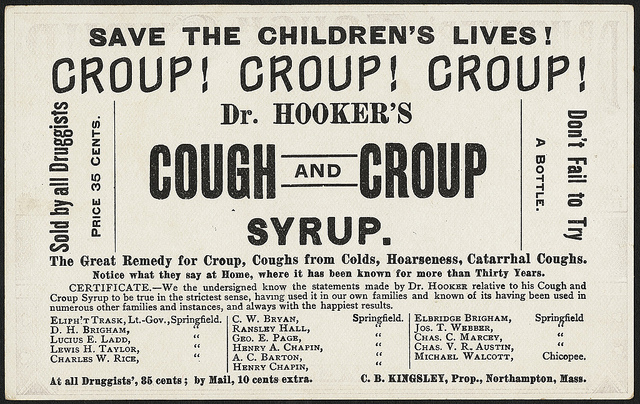Difference Between Bronchitis and Croup
What are Bronchitis and Croup?
Bronchiolitis and croup are both common medical conditions of infants or children. In these respiratory conditions, one common symptom is cough caused by the respiratory illnesses.
There exists a good affirmation that corticosteroids can alleviate illness severity and modify the natural history of signs in individuals who have croup and bronchitis, and that temporary symptomatic benefit can be acquired from the utilization of nebulized adrenaline.
However, bronchitis is caused in the lower airway (lining of the bronchial tubes) while croup is an upper airway infection and as such, they show different symptoms and are treated differently.

What is Bronchitis?
Bronchitis is defined as the inflammation of the large and medium-sized airways (bronchi) in the lungs. The disease is of two types; Acute bronchitis and Chronic bronchitis. Some of the signs of illness include discomfort in breathing, fatigue, runny nose, wheezing and chesty cough, with green or yellow mucous. The body tries to get rid of the extra mucous by coughing. Most people with chronic bronchitis have COPD (chronic obstructive pulmonary disease).
Acute bronchitis can affect individuals of all ages and is more common in months of winter. The most common cause of acute bronchitis is a virus. Other causes include high pollution in air, tobacco smoking and bacteria such as Mycoplasma pneumoniae or Bordetella pertussis.

What is Croup?
Croup is a viral illness in small children which results in narrowing of the upper airways. The illness can be a mild illness but can swiftly become serious. The condition becomes worse at night.
When you breathe, air passes through the voice box and windpipe into the lungs. In this, a viral infection results in swelling of the lining of the larynx and trachea, which become narrowed. Due to obstruction in air passage, breathing becomes more difficult and stridor (an unpleasant noise at the time of breathing in) is heard.
Difference Between Bronchitis and Croup
-
Definition
Bronchitis
Bronchiolitis refers to inflammatory bronchial reaction affecting the smallest airways (bronchioles that carry air to the lungs) by blocking them and causing cough with mucus in children. It typically causes coughing and bronchospasm.
Croup
Croup, also termed as laryngotracheobronchitis, refers to the inflammation of the larynx and trachea in small children, which interferes with normal breathing. It has a characteristic barking cough and is usually caused by allergy, viral infection, or a foreign body.
-
Respiratory Rate
Bronchitis
Marked increase or decrease in respiratory rate can be seen in case of sever Bronchitis.
Croup
Marked increase or decrease in respiratory rate
Tracheal Tug
Nasal Flaring
-
Oxygen Requirement
Bronchitis
- O2 saturation 90 -92% (Moderate Bronchitis)
- O2 saturation less than 90%. Hypoxemia, may not be corrected by O2 (Severe Bronchitis)
Croup
- Oxygen is not required in case of moderate infection
- Hypoxemia is a late sign of significant upper airways destruction (chronic croup)
-
Symptoms
Bronchitis
- Fever
- Wheezing
- Dry, hacking and severe cough
- Blue coloured skin
- Difficulty in breathing
- Rapid breathing
- Sputum production
- Tiredness
- Headache
- aches
Croup
- Begins with coryzal symptoms
- Barking cough
- Running nose
- Hoarse Voice
- Harsh stridor
- Noisy breathing
- Excessive drooling or difficulty swallowing
-
Causes
Bronchitis
Viruses causing bronchiolitis
- Rhinovirus
- Measles virus
- Adenovirus
- Influenza virus
- Parainfluenza virus (type 3)
- Respiratory syncytial virus
- Human metapneumovirus
- Bocavirus
- Coronavirus
Croup
Croup is mostly seen from late fall till the early months of winter. The infection has a moderately higher frequency in boys than in girls. Croup is a condition which is caused by an infection. There are 2 types of this condition – viral and spasmodic.
Viruses causing Croup include:
- Parainfluenza virus type II
- Influenza virus types A and B
- Allergies
- Coxsackievirus A and B
- Echovirus
- Herpes simplex virus
In rare cases, it is caused by:
- Staphylococcus aureus
-
Treatment and Medication
Bronchitis
- Humidified air
- Bronchodilators
- Nasal suctioning
- 3% hypertonic saline nebulization
- Epinephrine and dexamethasone in combination
- Oxygen therapy and intravenous (IV) fluids
- Prophylaxis: Synergis IM once a month
Croup
- In most of the cases, the infection goes away by itself by using warm and moist air
- Breathing in cold air (most effective treatment)
- Prednisolne 1-2 mg/kg PO stat dose or Dexamethasone 0.15 mg/kg PO Stat dose
- Nebulised adrenaline is recommended for severe infection
- Inhaled budesonide
- Elderberry syrup
- Expert intubation in case the infection worsens
Summary of Bronchitis VS. Croup
The points of difference between Bronchitis and Croup have been summarized below in a tabular form:

- Difference Between Global Warming and Greenhouse Effect - May 18, 2024
- Difference Between Vaccination and Immunization - March 3, 2024
- Difference Between Selective Mutism and Autism - February 25, 2024
Search DifferenceBetween.net :
Leave a Response
References :
[0]Everard, M. L. (2009). Acute bronchiolitis and croup. Pediatric clinics of North America, 56(1), 119-133.
[1]Miller, E. K., Gebretsadik, T., Carroll, K. N., Dupont, W. D., Mohamed, Y. A., Morin, L. L., ... & Hartert, T. V. (2013). Viral etiologies of infant bronchiolitis, croup, and upper respiratory illness during four consecutive years. The Pediatric infectious disease journal, 32(9).
[2]Image credit: https://upload.wikimedia.org/wikipedia/commons/9/99/Bronchitis.jpg
[3]Image credit: https://www.flickr.com/photos/boston_public_library/8558292032
